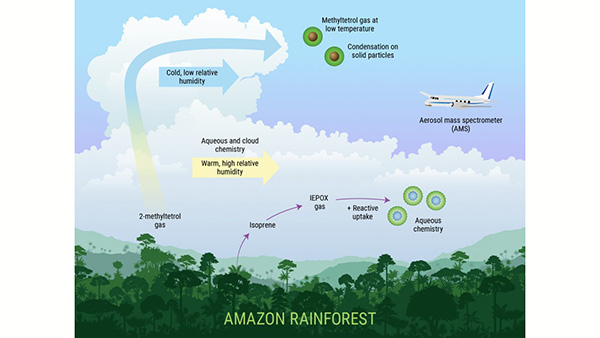Finding Missing Links Associated with Aerosol-cloud Interactions: Aqueous and Cloud-phase Secondary Organic Aerosol Formation
This early career project aims to advance the fundamental understanding of
secondary organic aerosols
(SOA) that are formed within
aqueous
aerosols and cloud droplets. SOAs are produced from the
oxidation
of volatile or semi-volatile organic compounds, and they account for a significant amount of atmospheric airborne particles. This research will provide a comprehensive description of coupling between cloud-aerosol interactions and chemistry.
| Keywords | cloud-aerosol interactions |
|---|---|
| TYPE | Early Career |

Near the surface over the Amazon rainforest, aqueous and cloud chemistry causes formation of isoprene epoxydiol SOA (IEPOX-SOA). But in the upper troposphere at 10-14 km altitudes, this chemistry is shut off due to lack of liquid water and highly viscous SOA. In-plant biochemistry and/or surface chemistry causes the release of methyltetrol gases. Cloud updrafts then transport the gases to the upper troposphere where they condense to form IEPOX-SOA particles at low-temperatures. This uniquely explains the IEPOX-SOA mass loadings observed by aircraft over the Amazon rainforest in the upper troposphere. These key land-atmosphere-cloud interactions are not included in current atmospheric models. (Image credit: Nathan Johnson, PNNL)
Categories












